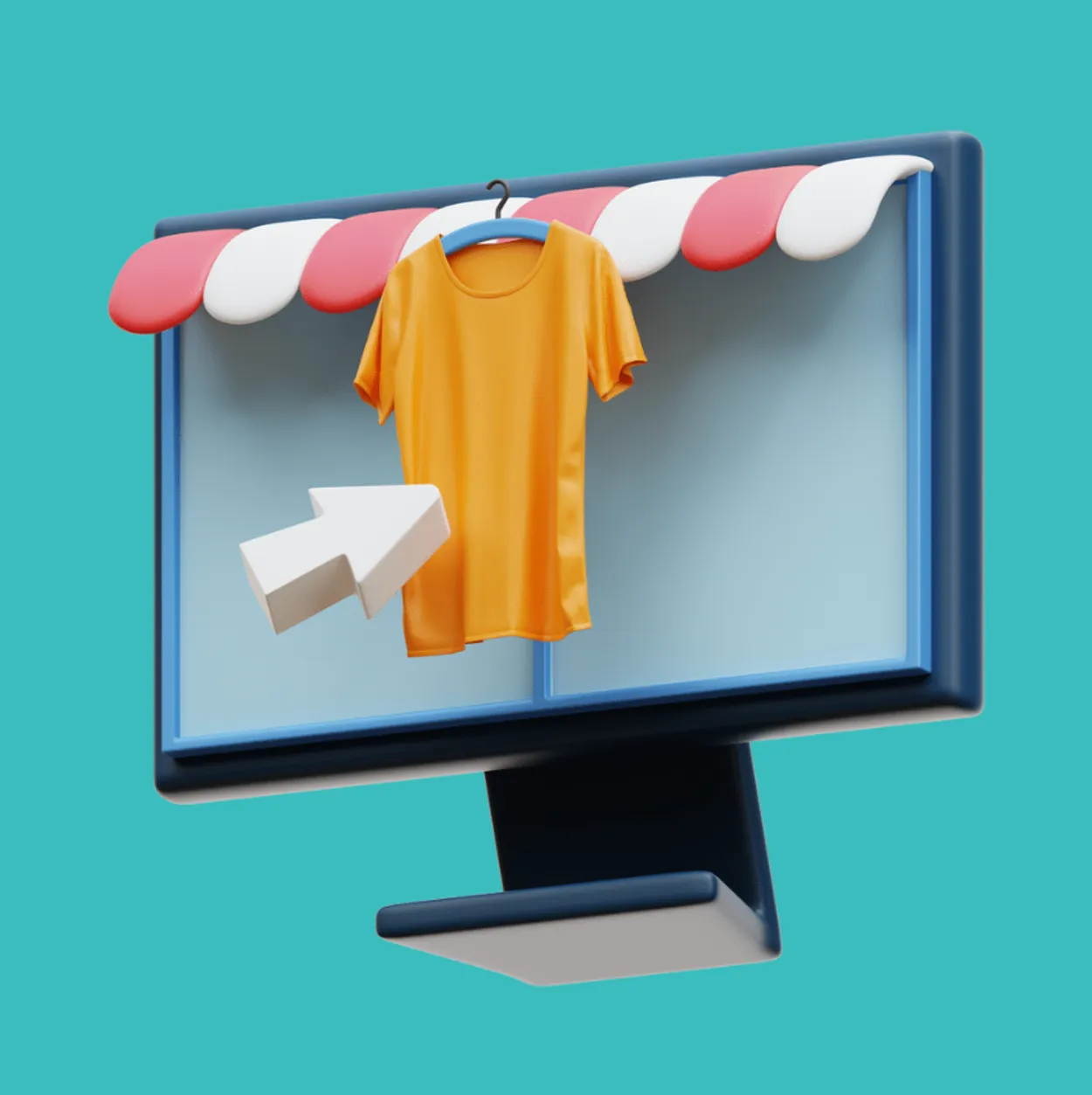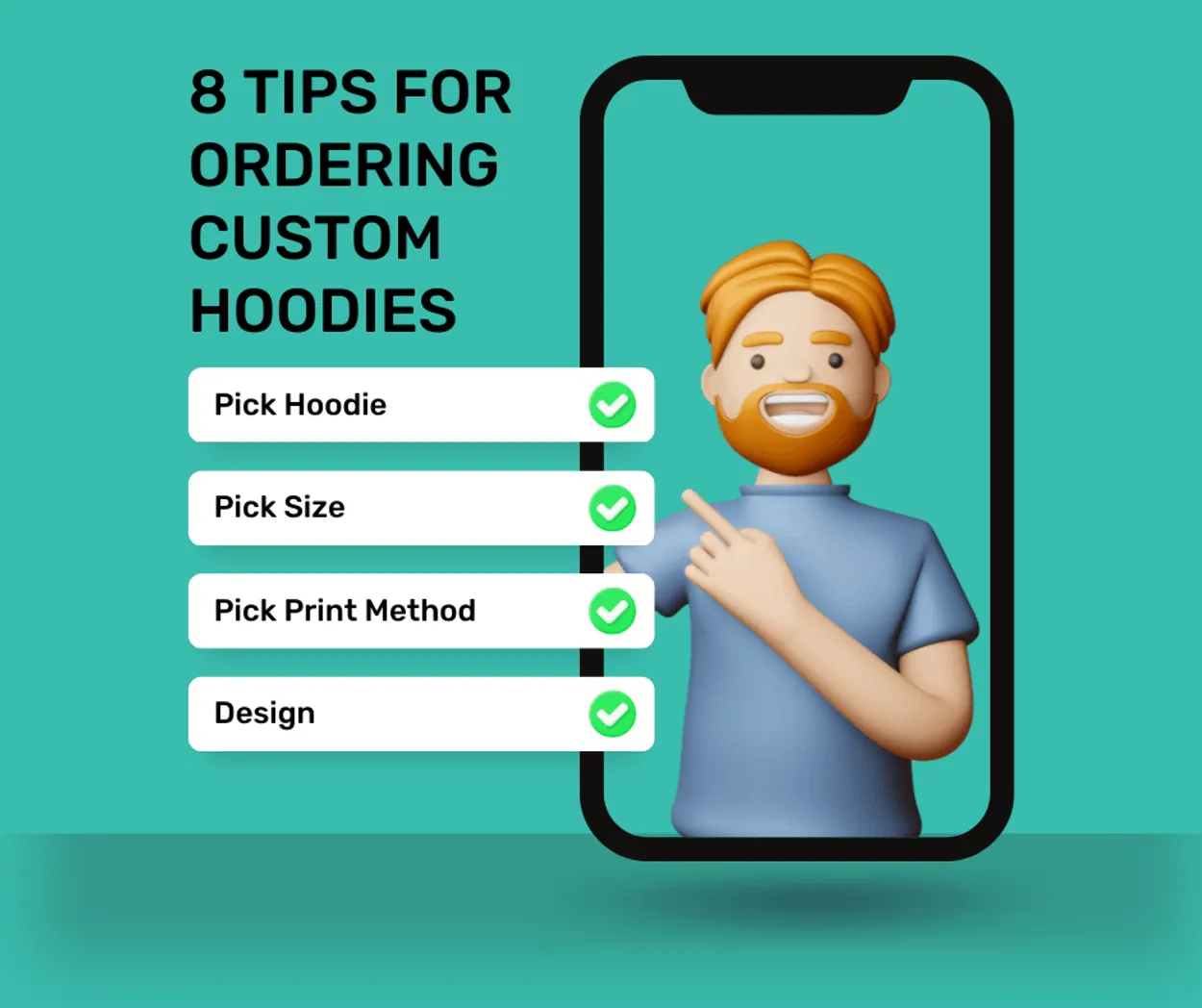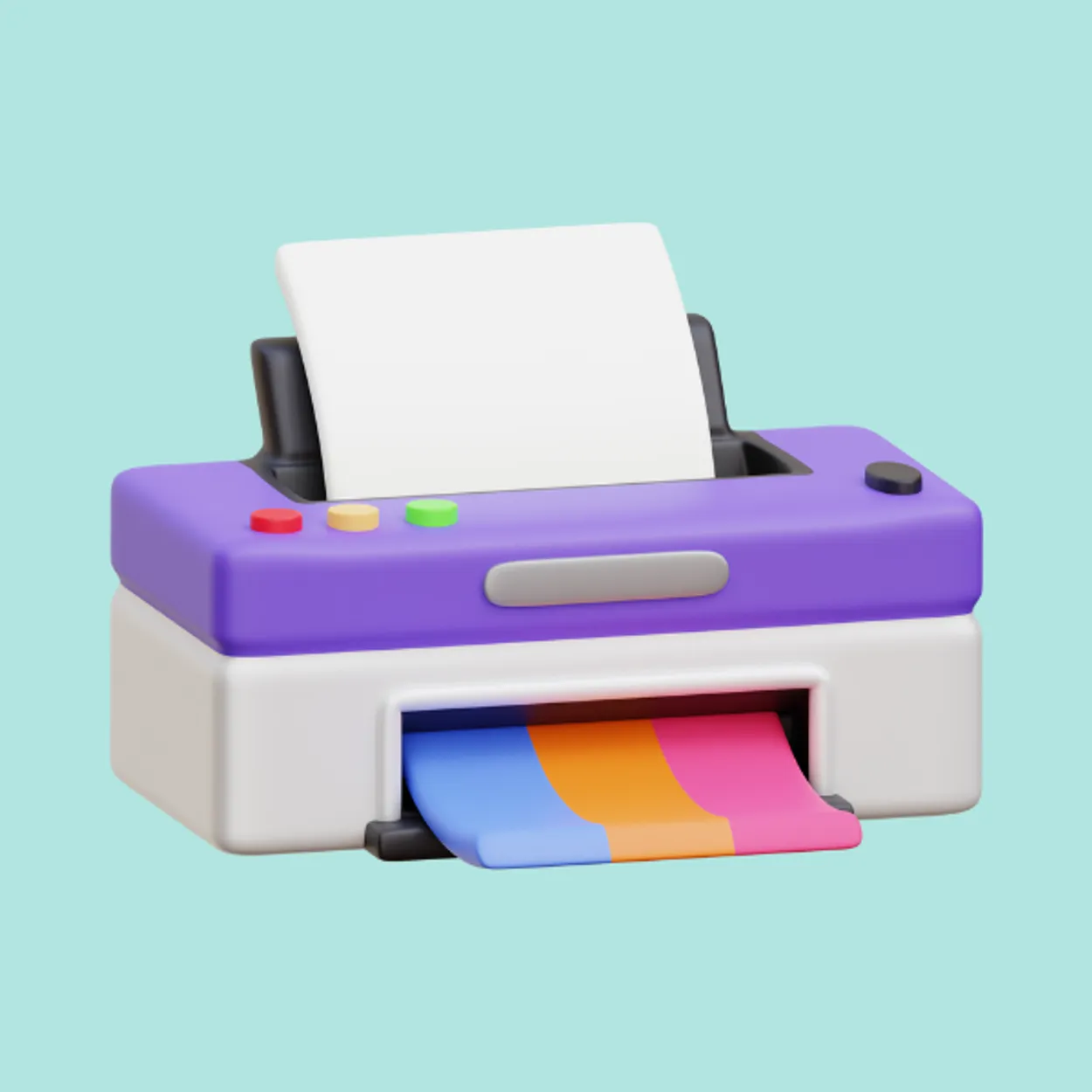DTF Vs. Screen Printing
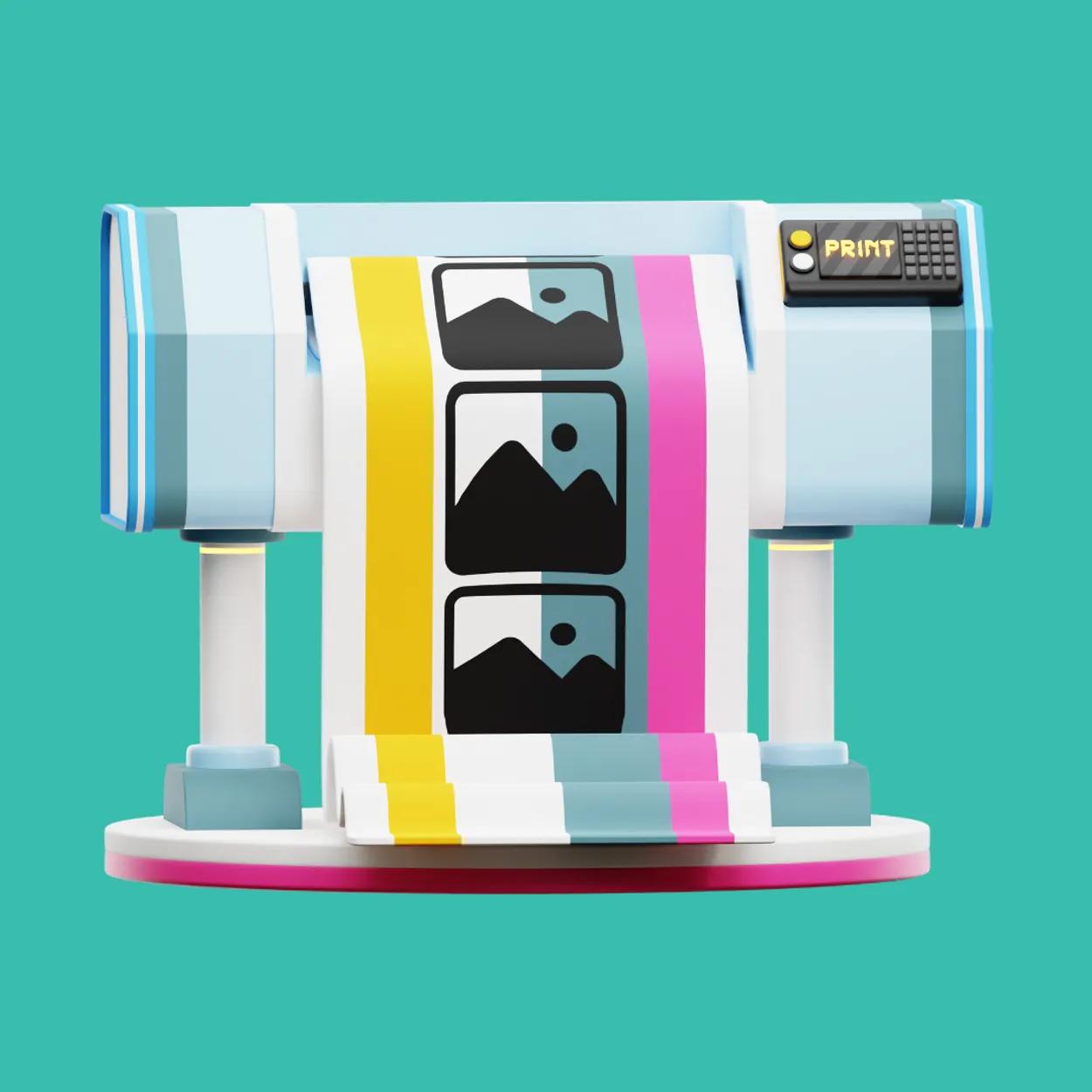
Direct-to-Film (DTF) vs. Screen Printing: Which is Right for Your Custom Apparel?
When it comes to custom apparel, choosing the right printing method can make all the difference in achieving the look, feel, and durability you want. Two popular options, Direct-to-Film (DTF) and Screen Printing, each have unique strengths that suit different projects. This guide breaks down the differences between these two methods to help you decide which is best for your needs.
Understanding the Printing Methods
When it comes to garment decoration, selecting the right printing method is crucial for achieving the desired outcome. Two popular methods, screen printing and DTF (Direct-to-Film) printing, each offer unique advantages that cater to different needs.
Screen printing is a traditional method that involves using a mesh screen to apply ink onto fabric. This technique is particularly effective for large quantity orders, as it produces vibrant and durable prints. However, it requires a separate screen for each colour in the design, making it less cost-effective for small orders or designs with multiple colours.
On the other hand, DTF printing is a modern digital printing process that involves printing directly onto a heat transfer film. This film is then applied to the garment using a heat press. DTF printing is a cost-effective option for small to medium-sized orders and excels in producing high-quality, detailed prints. Its versatility allows it to work on a wide range of fabrics, making it a popular choice for custom apparel.
By understanding the differences between these printing methods, you can make an informed decision on which one is best suited for your specific needs.
What is the Screen Printing Process?
Screen printing is a traditional printing method that uses stencils (screens) to apply layers of ink onto fabric, resulting in a screen print. Each colour in the design requires a separate screen, making this method more labour-intensive during setup but highly efficient for bulk production.
Key Features of Screen Printing:
- Bold and Vibrant Colours: Delivers excellent colour vibrancy, especially on dark fabrics.
- Durability: Thick ink layers result in prints that withstand wear and multiple washes.
- Cost-Effective for Large Orders: Setup costs are offset when printing in bulk, making it an economical choice for high-quantity orders.
- Versatile Application: Works well on most fabrics, especially cotton and polyester blends.
Limitations:
- High setup costs and labour intensity are significant limitations because screen printing requires a separate screen for each colour.
- Limited capability for intricate designs or gradients.
- Restricted to fewer colours for cost efficiency.
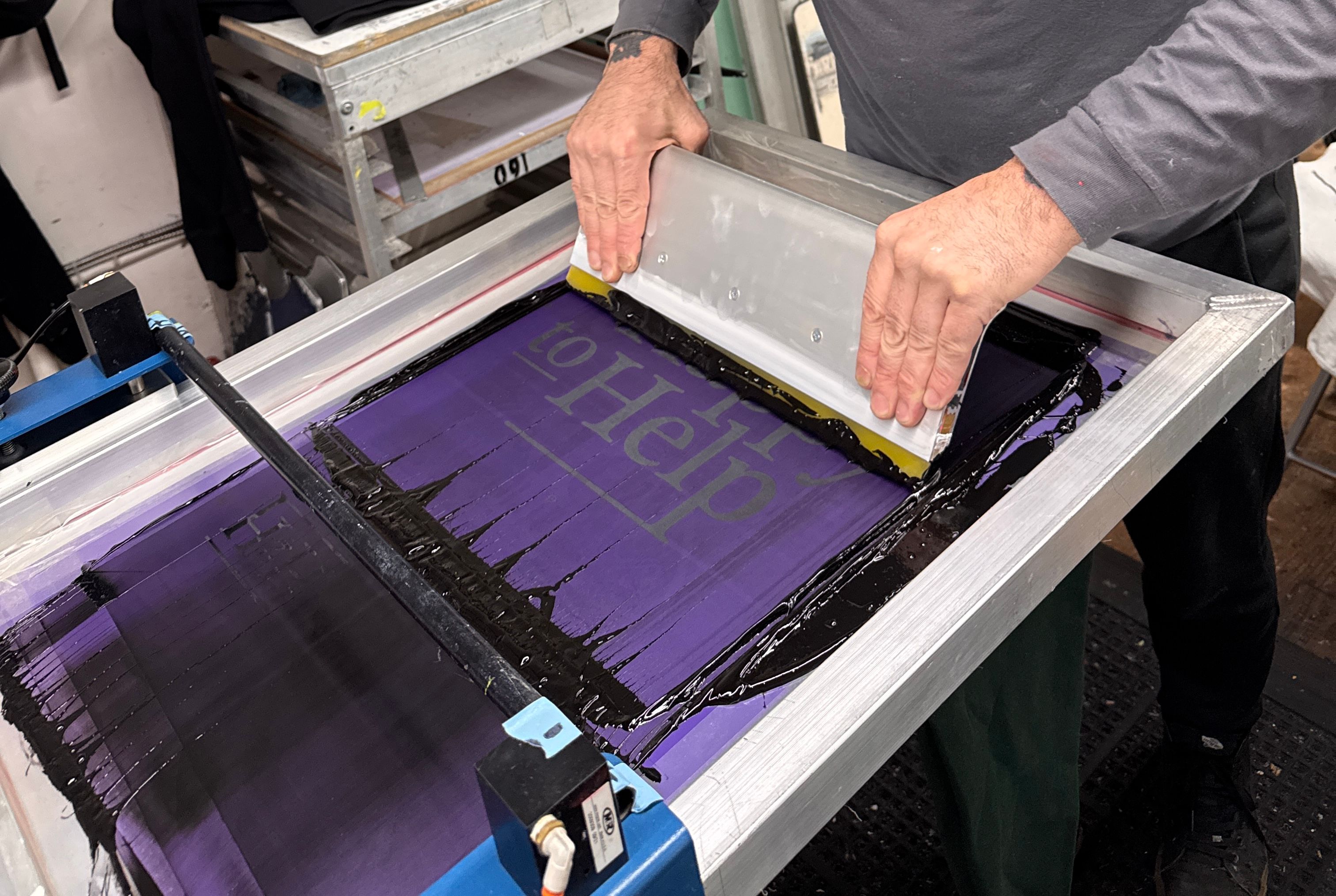
What is Direct-to-Film (DTF) Printing?
DTF is a newer technology that prints designs onto a special film, which is then transferred to fabric using heat and adhesive. It is gaining popularity for its ability to create detailed and durable designs on a wide range of materials.
DTF Printing Process
The DTF printing process involves printing the design directly onto a heat transfer film using a digital printer. This film is then applied to the garment using a heat press, which bonds the ink to the fabric. This process is faster and more cost-effective than screen printing, especially for small orders or designs with multiple colours. DTF printing allows for intricate designs and gradients, making it ideal for detailed and colourful prints.
By comparing the processes, it’s clear that screen printing is best suited for large orders with simple designs, while DTF printing is perfect for smaller orders and complex, multi-colour designs.
Key Features of DTF Printing:
- Versatility: Works on almost any fabric, including cotton, polyester, blends, and even non-textile items like tote bags or caps.
- Detailed and Vibrant Prints: Capable of handling intricate designs, gradients, and high-resolution images.
- Durability: Prints are crack-resistant and maintain vibrancy over time.
- No Minimum Order: Ideal for small quantities or one-off items.
Limitations:
- Slightly less breathable than screen printing due to the adhesive layer.
- Higher per-unit cost for large orders compared to screen printing.
- Cannot have gradients with no outside border.
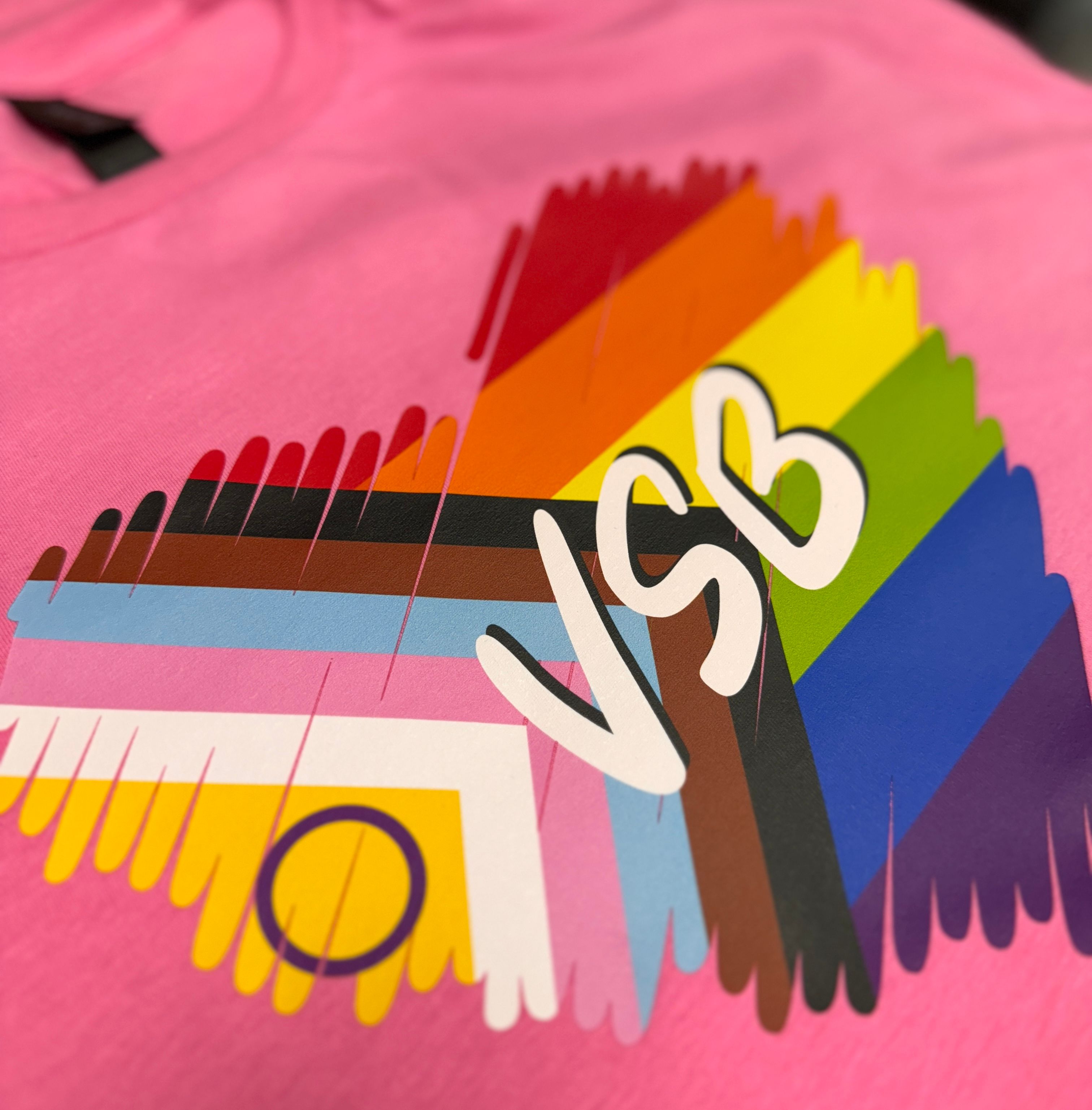
Comparing DTF and Screen Printing
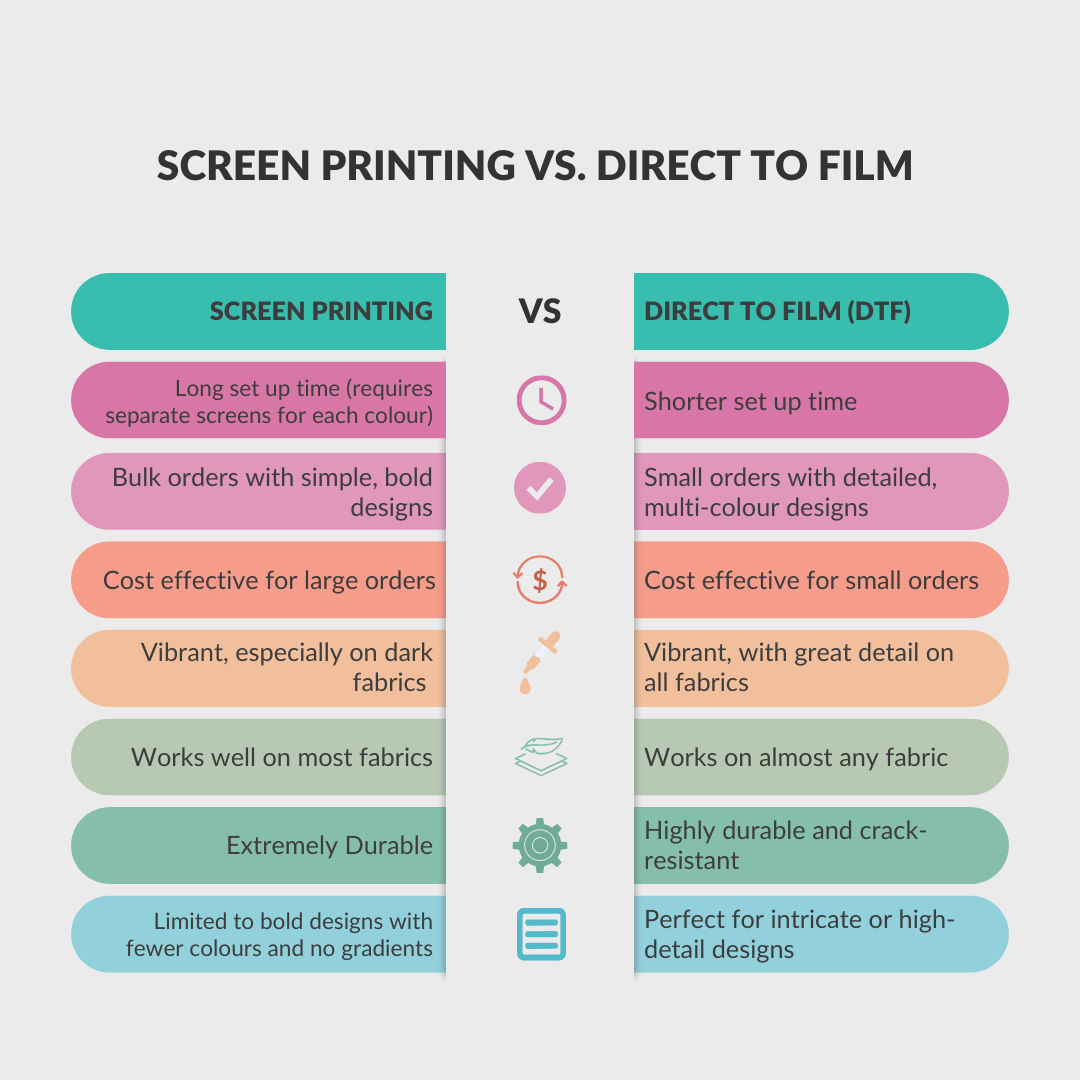
When comparing DTF and screen printing, it's important to consider the specific requirements of your print job. Each method has its own strengths and is suited to different types of orders and designs.
Each printing technique offers distinct benefits depending on the project requirements. Screen print transfers offer a practical solution for businesses requiring efficient turnaround times and flexible design options.
Traditional screen printing involves creating a stencil for each colour and layering ink on the print surface. This method is known for its durability, vibrant colours, and cost-effectiveness for bulk orders.
Printing Process and Quality
The printing process and quality of screen printing and DTF printing differ significantly, each offering distinct benefits depending on the project requirements.
Screen Printing Process
The screen printing process involves creating a design on a mesh screen, which is then used to apply ink to the fabric. The screen is coated with a light-sensitive emulsion, and the design is exposed to light, creating a stencil. The printer then prints by pushing ink through the open areas of the stencil, transferring the design onto the fabric. Each colour in the design requires a separate screen, making the process more time-consuming and expensive for complex designs. However, this method is highly efficient for bulk production and produces vibrant, long-lasting prints.
DTF Printing Process
The DTF printing process involves printing the design directly onto a heat transfer film using a digital printer. This film is then applied to the garment using a heat press, which bonds the ink to the fabric. This process is faster and more cost-effective than screen printing, especially for small orders or designs with multiple colours. DTF printing allows for intricate designs and gradients, making it ideal for detailed and colourful prints.
By comparing the processes, it’s clear that screen printing is best suited for large orders with simple designs, while DTF printing is perfect for smaller orders and complex, multi-colour designs.
Print Quality and Durability
Both screen printing and DTF printing produce high-quality prints, but they differ in terms of durability and vibrancy.
Comparison of Print Quality
Screen printing excels in producing vibrant, durable prints that can withstand repeated washing and wear. The thick layers of ink used in screen printing ensure that the prints remain bold and vibrant over time. However, the prints may not be as soft to the touch as those produced by DTF printing.
DTF printing, on the other hand, produces detailed prints with vibrant colours. The digital printing process allows for high-resolution images and intricate designs, making it ideal for projects that require fine details. While DTF prints are also durable, they may not match the longevity of screen prints, especially under heavy use.
In terms of print quality, both methods can deliver excellent results. The choice between screen printing and DTF printing ultimately depends on the specific needs of the project. If you require a cost-effective option with fast turnaround times, DTF printing may be the best choice. However, if you prefer a traditional method that produces high-quality, durable prints, screen printing is the way to go.
By understanding the strengths and limitations of each printing method, you can make an informed decision that ensures your custom apparel looks and feels just the way you imagined.
Cost Considerations
- Screen Printing: Ideal for large runs due to its high setup costs but low per-unit cost for bulk orders. If you're ordering 50+ items, screen printing is usually the more cost-effective option.
- DTF Printing: With minimal setup costs, DTF is great for small orders, detailed designs, or projects with multiple colours. The cost per unit is higher than screen printing for large orders but competitive for smaller quantities.
Which Should You Choose?
Choose Screen Printing If:
- You need a large quantity of items (e.g., 50+ pieces).
- Your design uses bold colours and simple elements.
- You want a cost-effective option for bulk orders.
Choose DTF Printing If:
- You need a small quantity of items or a one-off piece.
- Your design is intricate or includes gradients and many colours.
- You require versatility across a wide range of fabric types.
Final Thoughts
Both DTF and screen printing offer excellent results, but the right choice depends on your project’s size, design complexity, and budget. Coastal Reign offers both methods and can guide you through the selection process to ensure your custom apparel looks and feels just the way you imagined.
Ready to create something unique? Contact us today to get started!

_1733942989913%20(1).webp)
_1732737101371.webp)
.webp)
